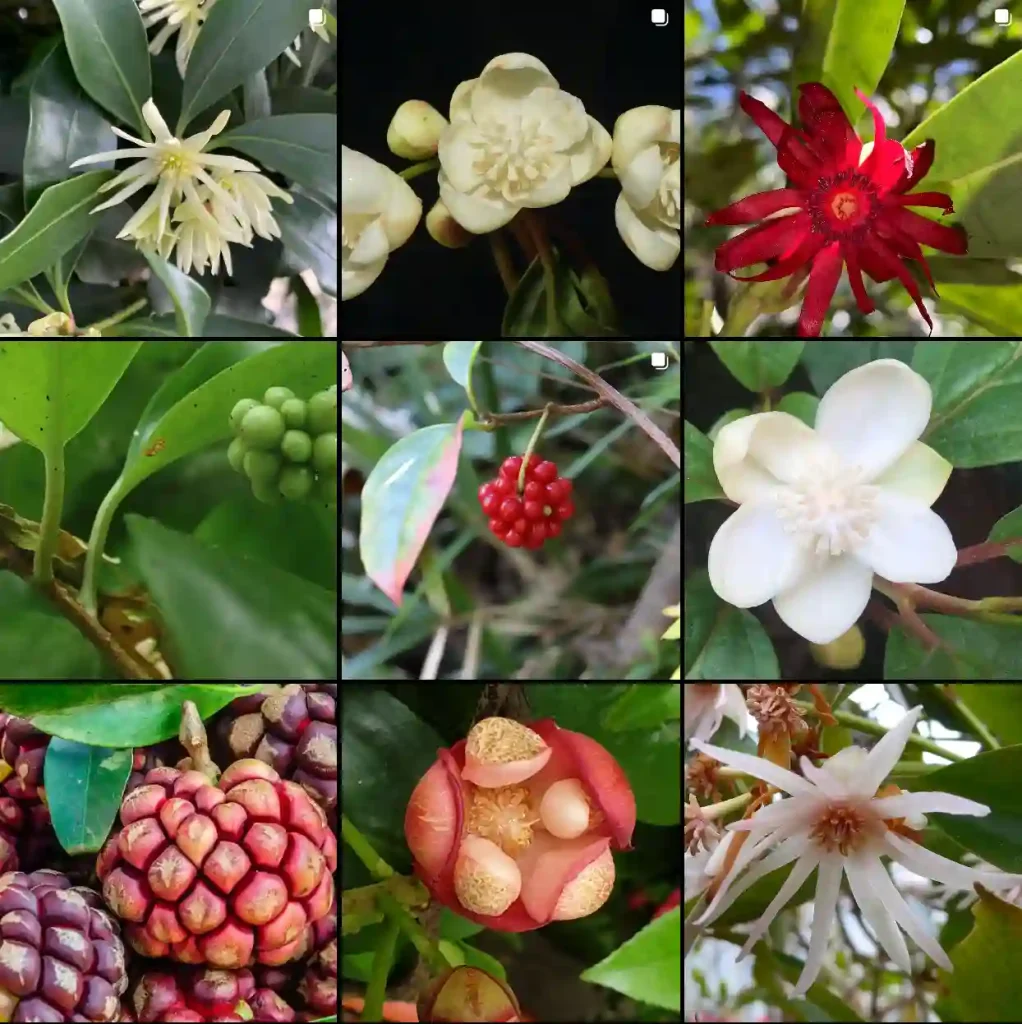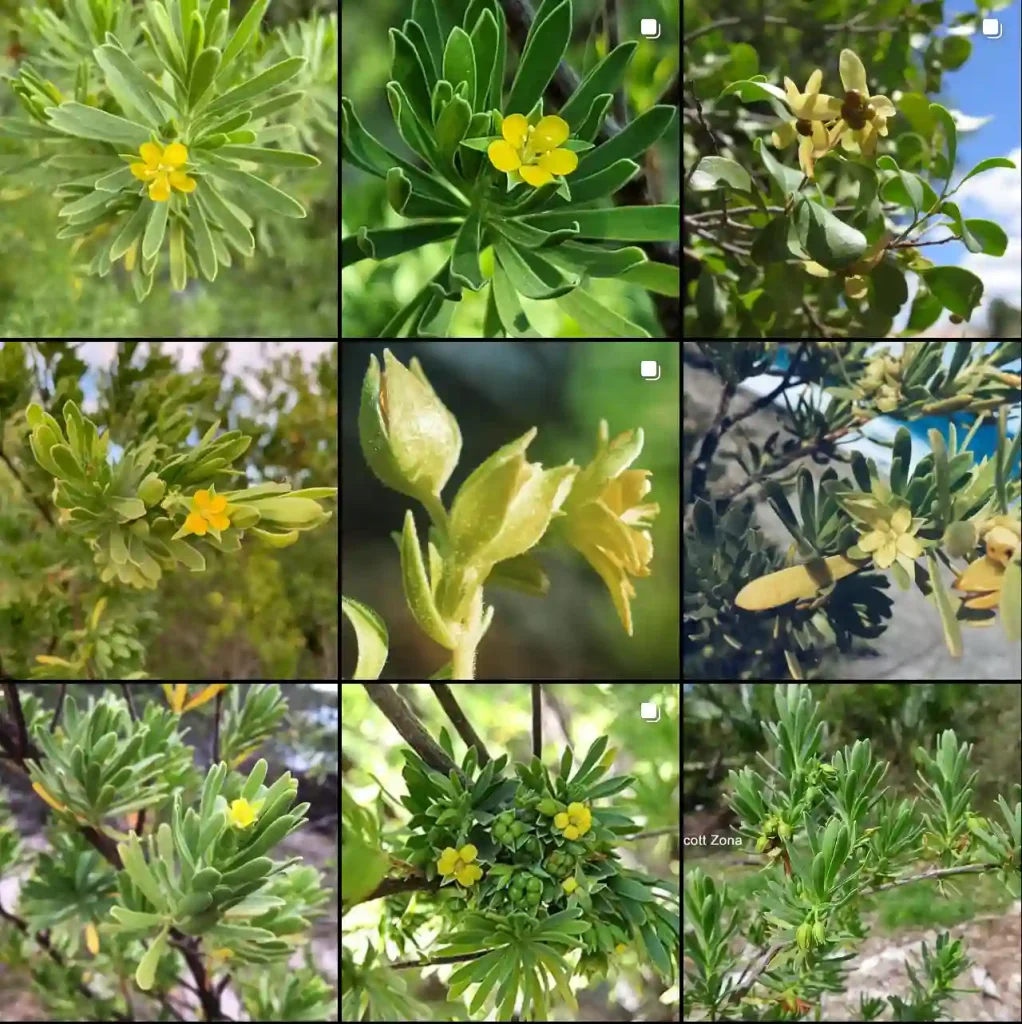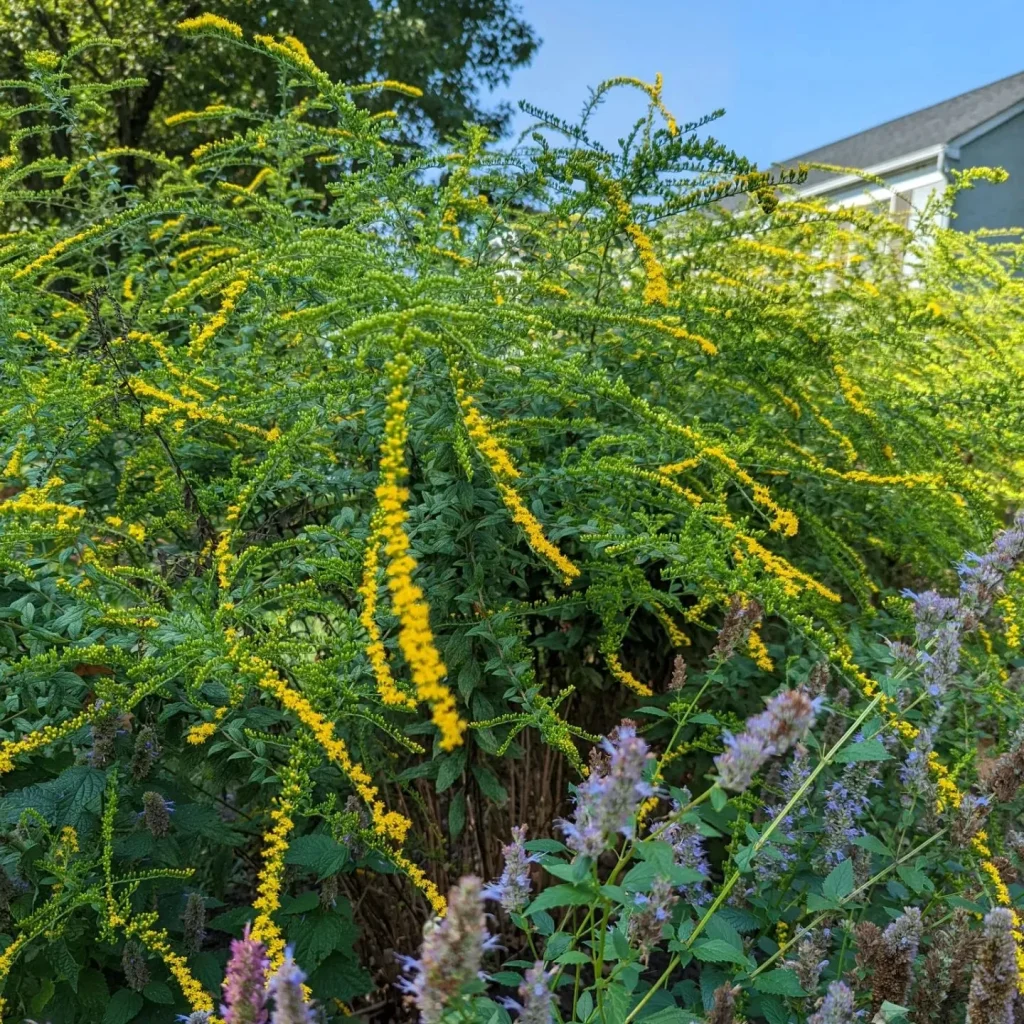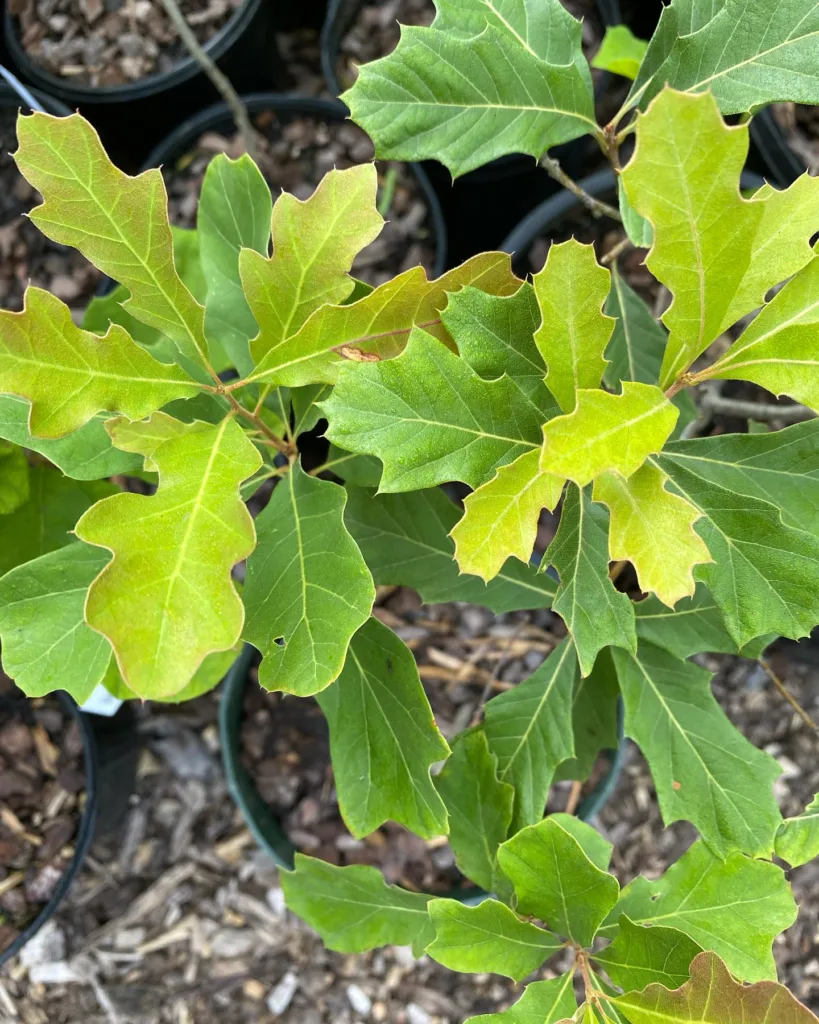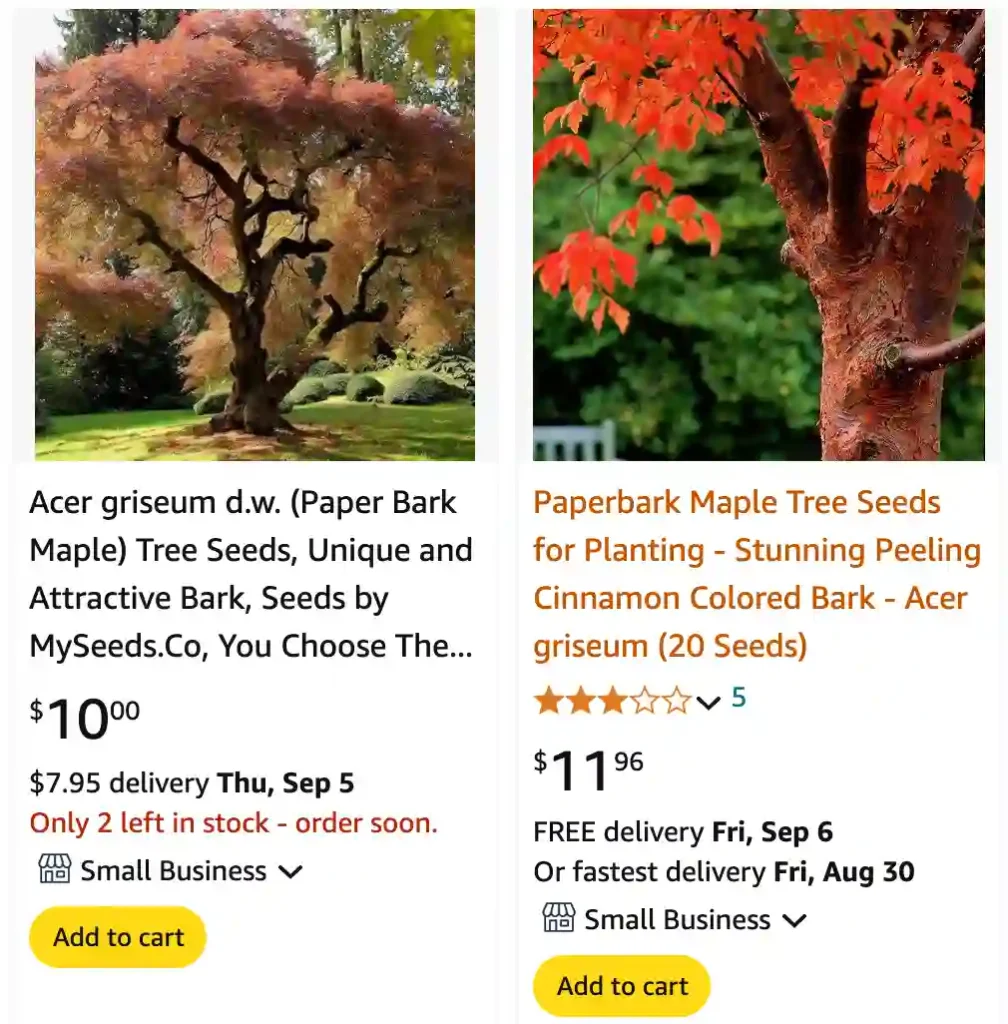
Frequently Asked Questions About Acer Griseum
As someone who has always loved the beauty and grace of trees, Acer Griseum, also known as the Paperbark Maple, has captured my attention for its stunning peeling bark and vibrant fall colors. In this article, I’ll share my experiences and knowledge about this captivating tree, addressing some frequently asked questions that might help you decide whether it’s the right choice for your garden.
168 Species in Genus Acer – Maple Tree
What is Acer Griseum?
Acer Griseum, commonly referred to as Paperbark Maple, is a small deciduous tree native to central China. It is renowned for its cinnamon-colored peeling bark that provides year-round interest, especially during the winter months. In autumn, its leaves turn a brilliant shade of red or orange, adding to its visual appeal. The tree typically grows to a height of 20-30 feet with a spread of 15-25 feet, making it an excellent choice for smaller landscapes or as a specimen tree in larger gardens.
Can Acer Griseum Be Pruned Back?
Yes, Acer Griseum can be pruned, but it’s important to do so with care. The best time to prune this tree is during the late winter or early spring before the new growth begins. Pruning should focus on removing any dead or damaged branches, as well as thinning out crowded areas to improve air circulation and light penetration. Avoid heavy pruning, as Acer Griseum has a naturally graceful shape that can be easily disrupted. I’ve found that light pruning every couple of years is usually sufficient to maintain its health and appearance.
How to Prune Acer Griseum?
When pruning Acer Griseum, use sharp, clean pruning shears to make clean cuts. Start by removing any dead, diseased, or damaged branches. Next, thin out crossing or rubbing branches to reduce the risk of disease and improve the tree’s shape. Always cut back to a main branch or bud, making sure not to leave stubs that could encourage disease. Pruning should be done sparingly, focusing on maintaining the tree’s natural form.
How Fast Does Acer Griseum Grow?
Acer Griseum is considered a slow-growing tree. In my experience, it grows about 6-12 inches per year, depending on the conditions. This slow growth rate is advantageous for gardeners who want a tree that won’t outgrow its space quickly. Over time, Acer Griseum develops a rounded crown and can reach its mature height of around 20-30 feet, but this can take several decades.
How to Grow Acer Griseum from Seed?
Growing Acer Griseum from seed can be a rewarding but challenging process. The seeds require a period of cold stratification to break dormancy. Here’s what I do:
- Collect seeds in the fall when they are ripe.
- Clean the seeds to remove any pulp and let them dry for a few days.
- Stratify the seeds by placing them in a plastic bag with a moist medium like sand or peat moss and store them in the refrigerator for 90-120 days.
- Sow the seeds in spring in well-draining soil, covering them lightly.
- Keep the soil moist but not waterlogged, and be patient; germination can take several months.
Where to Plant Acer Griseum?
Acer Griseum prefers a location with full sun to partial shade. It thrives in well-drained, slightly acidic soil but is adaptable to various soil types as long as they are not overly wet. When choosing a planting site, consider the tree’s mature size and its need for room to spread. I’ve found that it looks stunning as a standalone specimen or in a mixed border where its bark and foliage can be admired year-round.
Where Can I Buy Acer Griseum?
You can purchase Acer Griseum from reputable nurseries, garden centers, or online plant retailers. It’s best to buy from a source that provides healthy, well-established trees. I always check customer reviews and look for nurseries specializing in trees to ensure I get a high-quality plant.
Is Acer Griseum Palmately Compound?
No, Acer Griseum does not have palmately compound leaves. Its leaves are trifoliate, meaning each leaf is divided into three leaflets. This distinct leaf structure, combined with its beautiful peeling bark, makes Acer Griseum easily recognizable.
How to Care for Acer Griseum?
Caring for Acer Griseum is relatively straightforward:
- Watering: Keep the soil evenly moist, especially during the first few years after planting. Once established, Acer Griseum is moderately drought-tolerant but benefits from occasional deep watering during dry spells.
- Fertilizing: Apply a balanced, slow-release fertilizer in early spring to support healthy growth.
- Mulching: Mulch around the base of the tree to conserve moisture, suppress weeds, and regulate soil temperature.
Can You Grow Acer Griseum Indoors?
Acer Griseum is not suitable for growing indoors due to its size and need for natural outdoor conditions. It’s best grown outdoors where it can receive adequate sunlight and air circulation.
Is Acer Griseum Toxic?
Acer Griseum is not known to be toxic to humans or pets. However, as with any plant, it’s wise to prevent pets and children from ingesting any parts of the tree.
Common Problems with Acer Griseum
Acer Griseum is relatively pest and disease resistant, but it can occasionally suffer from issues such as aphids, scale insects, or leaf spot diseases. Regular monitoring and maintaining good cultural practices, such as proper watering and pruning, can help prevent these problems.
Benefits of Planting Acer Griseum
Planting Acer Griseum adds year-round interest to the landscape, thanks to its attractive bark and vibrant fall color. It provides habitat and food for wildlife and can serve as a focal point in gardens. Its slow growth and manageable size make it suitable for small gardens or as a feature tree in larger landscapes.
Acer Griseum is a tree that brings beauty and elegance to any garden. Whether you’re an experienced gardener or a beginner, this tree’s unique characteristics and relatively low maintenance make it a wonderful addition to your landscape.
If i die, water my plants!
